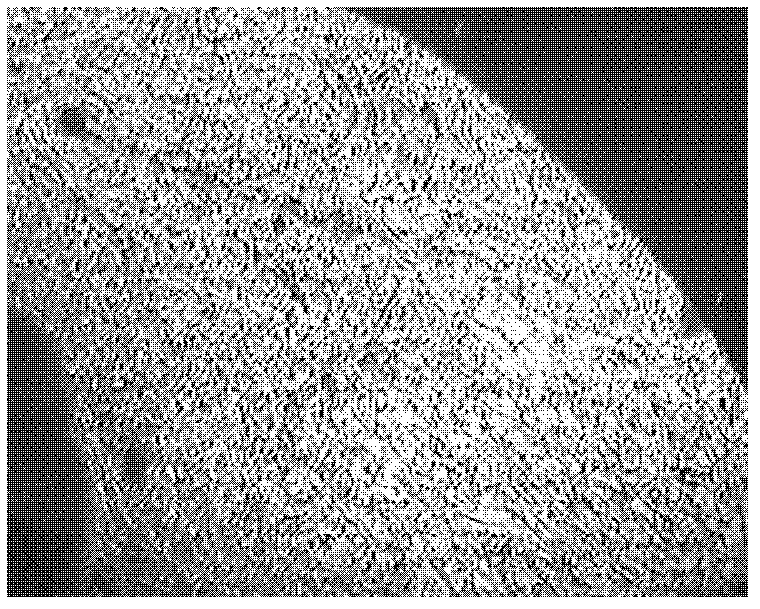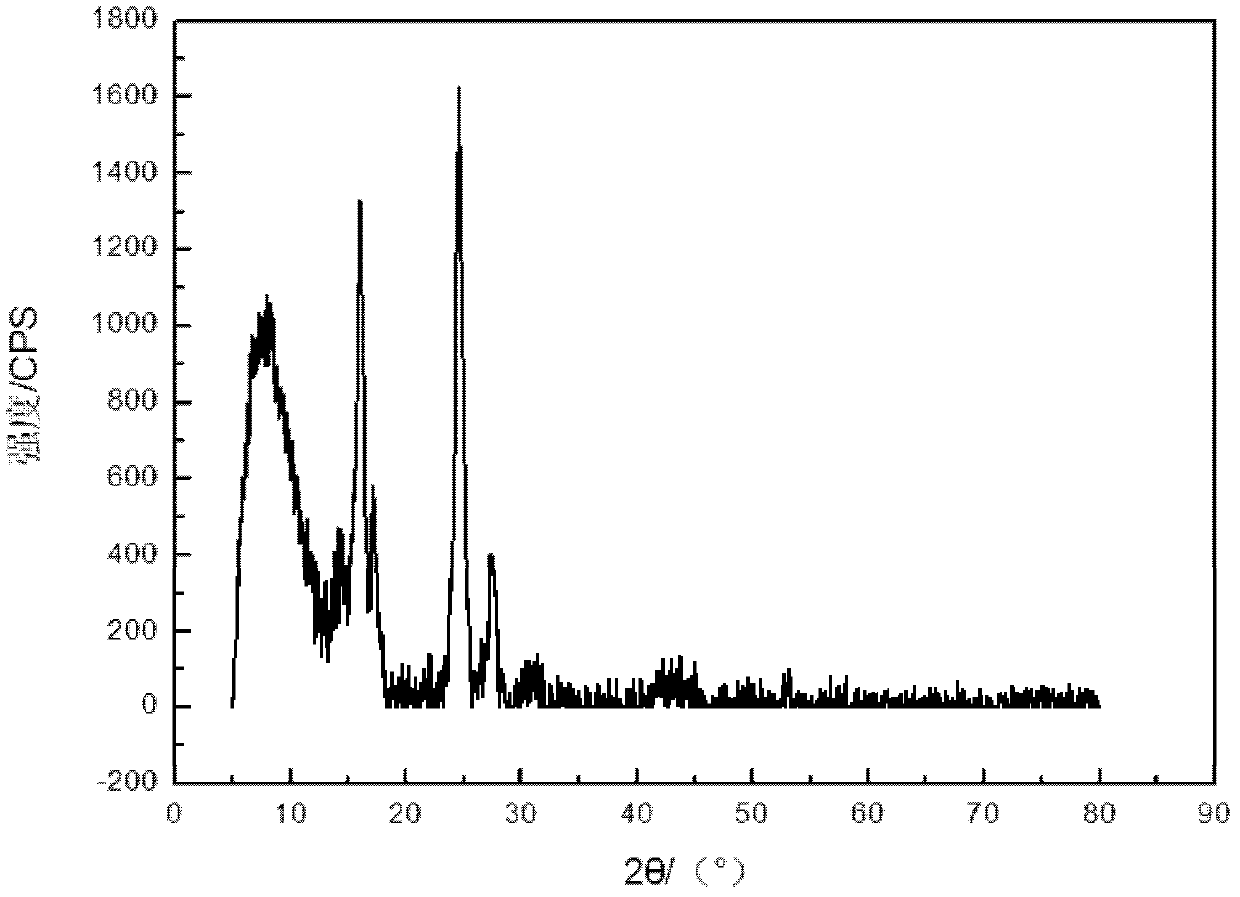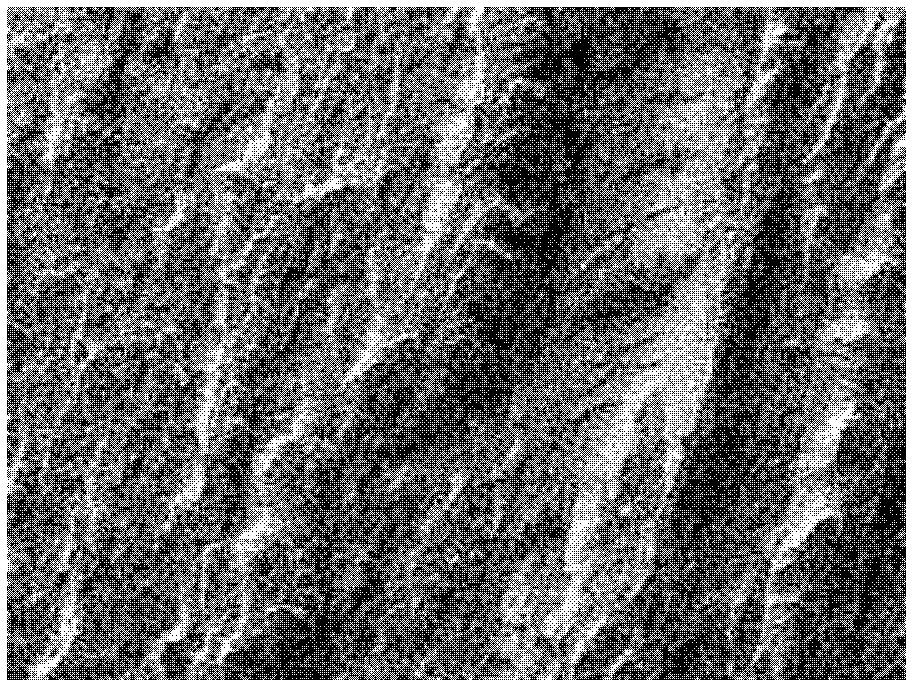Novel phosphorus-containing thermotropic liquid crystal copolyester and preparation method and application thereof
A technology of thermotropic liquid crystal and copolyester, applied in liquid crystal materials, chemical instruments and methods, etc., can solve problems such as the limitation of application scope, and achieve the effect of simple method, improved mechanical properties and thermal stability, and easy operation.
- Summary
- Abstract
- Description
- Claims
- Application Information
AI Technical Summary
Problems solved by technology
Method used
Image
Examples
Embodiment 1
[0063] Phosphorus-containing thermotropic liquid crystal copolyester as shown in formula I, its preparation method is as follows:
[0064] Weigh 6.6g of p-hydroxybenzoic acid and dissolve it in 100ml, 1mol / L NaOH solution, and place it in a 500ml three-necked flask as the water phase. Dissolve 4.06g of terephthaloyl chloride in 50ml of CCl 4 as the organic phase. Add the organic phase dropwise to the water phase with a stirring device at room temperature, add hydrochloric acid to pH = 3 after reacting for 4 hours, filter the precipitate, wash with deionized water and acetone several times, and dry in vacuum to obtain a compound dibasic acid;
[0065] Add 5g of complex dibasic acid, 50ml of thionyl chloride and 0.02ml of N, N-dimethylformamide into a three-necked flask equipped with magnetic stirring, reflux condenser, drying tube and tail gas absorption device, and under reflux temperature After reacting for 9 hours, distill off excess thionyl chloride under normal pressure,...
Embodiment 2
[0070] The phosphorous-containing thermotropic liquid crystal copolyester was prepared according to the steps in Example 1, but the analytically pure grade raw materials in Example 1 were replaced with industrial grade raw materials.
Embodiment 3
[0072] The ABS was placed in a blast drying oven, and dried at 80° C. for 2 to 4 hours; the P-TLCP synthesized in Example 1 was placed in a vacuum drying oven, and dried at 120° C. for 2 to 4 hours. The dried ABS and P-TLCP were kneaded by a double-roll mill for 10 minutes at a mass ratio of 100:5 (the temperatures of the front and rear rolls were 180°C and 170°C, respectively). After the kneading is completed, stack the blanks into the mold, move them into a flat vulcanizing machine, and press at 180°C and 15MPa for 420s. Finally, the samples were taken out, cold-pressed, made into standard samples, and various performance tests were carried out.
PUM
| Property | Measurement | Unit |
|---|---|---|
| limiting oxygen index | aaaaa | aaaaa |
| oxygen index | aaaaa | aaaaa |
| oxygen index | aaaaa | aaaaa |
Abstract
Description
Claims
Application Information
 Login to View More
Login to View More - R&D
- Intellectual Property
- Life Sciences
- Materials
- Tech Scout
- Unparalleled Data Quality
- Higher Quality Content
- 60% Fewer Hallucinations
Browse by: Latest US Patents, China's latest patents, Technical Efficacy Thesaurus, Application Domain, Technology Topic, Popular Technical Reports.
© 2025 PatSnap. All rights reserved.Legal|Privacy policy|Modern Slavery Act Transparency Statement|Sitemap|About US| Contact US: help@patsnap.com



